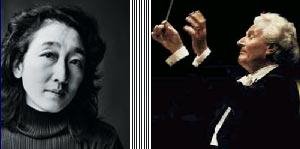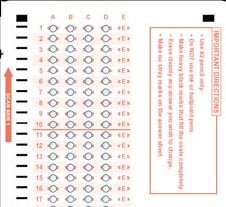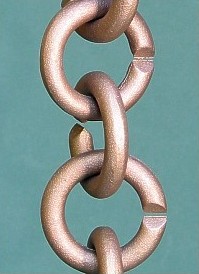Music as Propaganda in Washington and New York
This week I have had the chance to see two propaganda concerts in the span of three days – which, as an eager proponent of more cultural diplomacy (which is the name for propaganda if ‘your guys’ are doing it), I embrace wholeheartedly. In principle, at least.
Ideally, cultural diplomacy brings people of diverse background, opinions, and cultures together on presumably neutral, common ground. Art – classical music – for example.
The United States was no slouch at this during the Cold War. Duke Ellington, Van Cliburn, and Co. were out there to convince peoples around the world that the US was not a ruthless, soulless capitalist, slave-holding, baby-eating monster. Well, at least not only that. Since then, the US seems to have forgotten the benefits of this policy that cost a comparatively paltry $1 billion annually – especially when compared to certain policies that cost up to $200 million per day and have done significantly less to improve the image of the United States abroad.
No Nation had perfected the art of cultural diplomacy quite as the Soviet Union. In late 1989, the Afghan blood not yet dry on Russian bayonets, they sent the Red Army Choir to the Kennedy Center who, accompanied by standing ovations, left a tear-soaked audience behind. They sang at the White House and on David Letterman – and the press suggested that Gorbachev might as well retire all his career diplomats, as long as these singers were around. Doing “God Bless America” as an encore, surreal as it might have been, was a touch of genius.
Russian National Philharmonic Orchestra
Russian Propaganda at the Kennedy CenterOlga Kern, Rachmaninov Transcriptions, Corelli Variations Olga Kern, Rachmaninov/Balakirev, Sonata No. 2/Islamey |
Beethoven, PCs #1 & 3, Pletnev/RNO Tchaikovsky, Symphonic Poems, Pletnev/RNO Rachmaninov/Prokofiev, PCs #3, Pletnev/RNO Rachmaninov, Sy #2, Pletnev/RNO |
It is safe to assume that the successor-state to the Soviet Union – Russia – is not lacking much in this skill, either. And, indeed, after having dropped the ball for a few years after the fall of the Soviet Empire, Russia now puts some of its new riches toward cultural diplomacy, again. Its ballet companies tour the world’s capitals (currency having been the primary reason once, but losing more and more of its importance), its orchestras the world. At the heart of this mission is the National Philharmonic Orchestra of Russia (NPOR), an orchestra stamped out of the ground by Vladimir Putin for Vladimir Spivakov (close to former Culture Minister Mikhail Shvydkoi, violin teacher to Putin's kids, friend of the Putin family and of course ‘politically reliable’) after the Mikhail Pletnev-founded Russian National Orchestra (RNO) refused to lose its independence from the state to become the Russian National Philharmonic Orchestra (RNPO). (For more on the Moscow orchestra politics read George Loomis’ 2003 IHT article.) Its job is to spread the wonders of fine Russian culture (of which there are a great many, of course) and perhaps detract attention from Russia spiraling from a ‘totalitarian-light’ kleptocracy toward a 21st century variety of fascism.
The RNPO tours with some of the finest Russian soloists and takes a good crack at their mission. This time they brought Olga Kern to the Kennedy Center – and she may well have detracted successfully from energy extortion, journalist assassinations, Chechnya, et al... but unfortunately she also detracted from Rachmaninov, whose second Piano Concerto she played. Technically gifted and with some very fine recordings (Harmonia Mundi) under her (short) belt, this excessively beautiful blonde did nothing to further Rachmaninov’s cause among the connoisseurs in the audience. Her opening chords were very nicely organized around a steady crescendo, but there was no sense of portamento; the chords were plunked down separately (as is lamentably often the case) for effect, and then exaggerated with little extra delays. The slow movement was percussive and devoid of any legato, robbing “R2” of its integrity for the sake of a little hollow splash. The most interesting aspect of the final movement was the intricate muscle-work on her toned, exposed shoulders. The Piano – a Yamaha – sounded bearably bright in the upper register but seemed to ‘burp’ in the very lowest: not an advertisement for the craft of the Japanese makers.
The preceding Festival Overture op.96 by Dmitry Shostakovich is, fittingly, a propaganda work written to commemorate the 37th anniversary of the Revolution (it was part of a deal for DSCH to re-ingratiate himself with the party). It’s one of my least favorite works by Shostakovich: A trite, pompous, never-altering 8-minute all-out fake orgasm that might impress at first, but is, at best, a musical Potemkin’s Village. DSCH’s infinitely superior propaganda work, the genuinely great Fifth Symphony was – not surprisingly – on the second half of this program... but by then these ears had had enough and moved on to hear Wagner next door. The NPOR plays well but far from great – with “Russian subtlety” as a friend put it mischievously. It does not hold a candle to Pletnev’s (unpolitical) RNO which, tellingly, made Beethoven the featured composer of 2006 (it was 'supposed' to be the Shostakovich's year).
North German Radio Symphony Orchestra
Hanseatic Propaganda at Carnegie Hall
The North German Broadcasting Company (NDR) had different goals for its North American (only New York, actually) outreach – perhaps less nefarious, if no less calculating. With their primary instrument, the North German Radio Symphony Orchestra (NDRSO), they are here to promote (raise visibility & funds) their new Private-Public-Partnership undertaking of building a new symphony hall in Hamburg... the imposing, but fittingly impressive “Elbe Philharmonic Hall”.
A glossy, oversized, lavishly illustrated catalogue accompanied their first (of two) Carnegie Hall concerts on Monday, March 27th, showing the plans for this Herzog & de Meuron (Tate Modern, London – de Young Museum, San Francisco – Olympic Stadium, Beijing) developed complex – and giving a history of the city, the NDR, and Music Director Christoph von Dohnányi. The building, sitting on the late 19th century, dark-red brick storage houses in the former industrial port district, looks like it is straight out of a futuristic version of The Lord of the Rings; a tower of light, a ship sailing some 115 feet above the ground.
 Their program, true to their cause, was “all-Hamburgian”. That’s not too difficult if your native sons include Felix Mendelssohn-Bartholdy and Johannes Brahms and it’s even easier if you include – only natural for a city shaped by its traders and merchants – those who have made Hamburg a center of their work or life: Georg Philipp Telemann, C.P.E. Bach, Gustav Mahler, György Ligeti, Alfred Schnittke, Sofia Gubaidulina, et al..
Their program, true to their cause, was “all-Hamburgian”. That’s not too difficult if your native sons include Felix Mendelssohn-Bartholdy and Johannes Brahms and it’s even easier if you include – only natural for a city shaped by its traders and merchants – those who have made Hamburg a center of their work or life: Georg Philipp Telemann, C.P.E. Bach, Gustav Mahler, György Ligeti, Alfred Schnittke, Sofia Gubaidulina, et al..Having originally scheduled my NDR experience for Tuesday, I fully expected the Mendelssohn Violin Concerto to be performed. A very fine performance, surely, under Vadim Repin, but still the same old, if ever-beautiful, concerto. What a delight and joy to be presented with the whacky, wild, and wondrous Forth Violin concerto by Alfred Schnittke, instead! The musical Gods seemed to have smiled upon me, even if many audience members more likely grid their teeth. They should not have, because this concerto, even if its fourth movement is probably a little too long for its own good, is music to smile about and laugh at... it’s entertainment in the best sense. It toys with beauty and the listeners’ expectations before it irreverently pulls the rug out from underneath them. It’s a creative and unique collage of styles; it is part serene, part surreal. There were moments where I fully expected soloist Repin to crack a smile mid-playing. Schnittke in general and this work in particular, is ill served by being taken too seriously. We don’t need an extra furrow in our brow as we might with the all-capital-letters “serious” music of Liszt or late Beethoven.
Bells toll the first movement in – whereupon the violin enters in faked harmony before it all goes to hell, crunching and cats wailing... tricking the listener and making him fear the worst before reemerging as sweet and lyrical. The second movement (Vivo) has a ridiculously frantic climax and lots of big-hearted cacophony with a broad smile; a far cry from the bone-dry, thin-lipped intellectual modernism of a Boulez or Ferneyhough. Who can refuse to love the harpsichord in the third movement where it supports one of the hauntingly beautiful melodies in the solo violin and strings before it slowly slips away to turn sour in a deliciously subversive – or coy – way. A bit quieter, perhaps even with serious moments, the fourth movement loses some of the edge, even as it winks at the listener, courtesy of the prepared piano.
The other highlight of the concert was a rich and saturated rendition of Brahms’ First Symphony. From the first timpani strokes onward, this was captivating playing. Cut from one cloth, and a luscious cloth, at that. Confident – just like Brahms must have labored hard on making it sound – with shimmering backdrops to serve the melodies and minimal thematic material. But even amid this generous sound there was at every point an attention to detail displayed that other orchestras might give in an opening or final chord, but few places else. With the focus audibly being on more than just getting the notes right and playing in unison (largely a given, with the NDRSO), this was enough to elicit rave ovations from most of the Carnegie audience. The Mendelssohn Ruy Blas Overture, op.95, had already shown that this orchestra is something to be proud of... an oiled machine with a lean, expressive, sinuous string section; a band that is technically so assured and in control that it automatically hones in on elements like detail, tone, feeling, color.
Today they will perform the aforementioned Mendelssohn Violin Concerto, Mahler's First Symphony, and Ligeti's Lontano. On Wednesday they will perform Beethoven's Eroica as part of the United Nation's 50th anniversary celebration of the 1957 Treaty of Rome.

























































